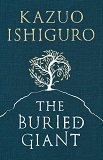
The Loose End of the Rainbow, by D. B. Pacini
Book Review by Kelly A. Harmon
The book opens with the lamentations of the children. All seventeen are introduced, plunging the reader into a confusion of characters and family relations. Pacini includes a Guide to Main Characters at the back of the book. It's a necessary reference tool, which in some ways proves how Pacini fails to open the story appropriately. She could have spent more time showing who the characters are in the book, giving them each a personality we could hope to relate to and remember. Seventeen is likely too many even for rich description to aid the reader, but in the brief opener, we learn that all the children react the same way to their elder's disappearance: scared and afraid. It's unbelievable that not a single one of these children lets loose with a gleeful whoop before hard reality set in. This sets the tone for the rest of the book.
To further the insult, before we know what action the children will take, the book flashes back to eight years earlier. The ensuing scene provides the history of two of the oldest teens whose job it becomes to lead the others on a journey across America in search of the adults. The flashback lets us know that Paints-with-Words and White Eagle have special powers which will aid this Tribe of Innocents on the journey they're about to embark on.
But, ironically, fifteen pages later, and two days after the children have awakened to find their elders gone, they are now going to bed. No action has been taken, no decisions made, but we learn that Paints-with-Words and White Eagle, now the tribe's elders since they are the oldest, have comforted the others for two whole days. Yawn.
The next scene is a flashback...and so on and so forth throughout the remainder of the book. The main storyline is continuously interrupted by a story of American Indian folklore, a fairytale written by Pacini, or some other cultural fable, weaving "life lessons" into the narrative and destroying the continuity of the tale.
There are several good things to say about The Loose End of the Rainbow: Pacini has done her research and weaves significant American Indian lore--as well as other cultural knowledge--into the book. Where she's deviated from the traditional stories--or even made them up-- she's made certain to inform the reader via footnote. As an introduction to the basics of American Indian lore, in a fictionalized account, young readers could do worse. And 10% of the profits of the book benefit American Indian Children's Charities.
Unfortunately, writing for children doesn't grant a pass when it comes to adventure and excitement, both of which are lacking here. There's also a great deal of thinly veiled preaching to children about virtues: honoring the elders, selflessness, compassion, patience, etc. and about the environment. The story often takes a back seat to whatever virtue is being pedaled, often relayed in large bursts of exposition.
The book contains over 130 footnotes. In the Author's Note, Pacini states that they may be skipped, but she urges readers to study them in order to "experience the story with its greatest richness." Mostly, they detract from the already disjointed flow of the story. And, although intended for 9-to-12 year olds, it's difficult to believe that youngsters in this age bracket need a footnote for teepee or totem pole. Other footnotes contain more useful information, but because Pacini includes her own opinions in some of the footnotes, parents may want to review the content before giving the book to a child.
|
Click here to buy The Loose End of the Rainbow, by D. B. Pacini on Amazon
|
The Loose End of the Rainbow, by D. B. Pacini on Amazon

| More Books You Might Like |
| Comments on The Loose End of the Rainbow, by D. B. Pacini |
| There are no comments on this book. |




